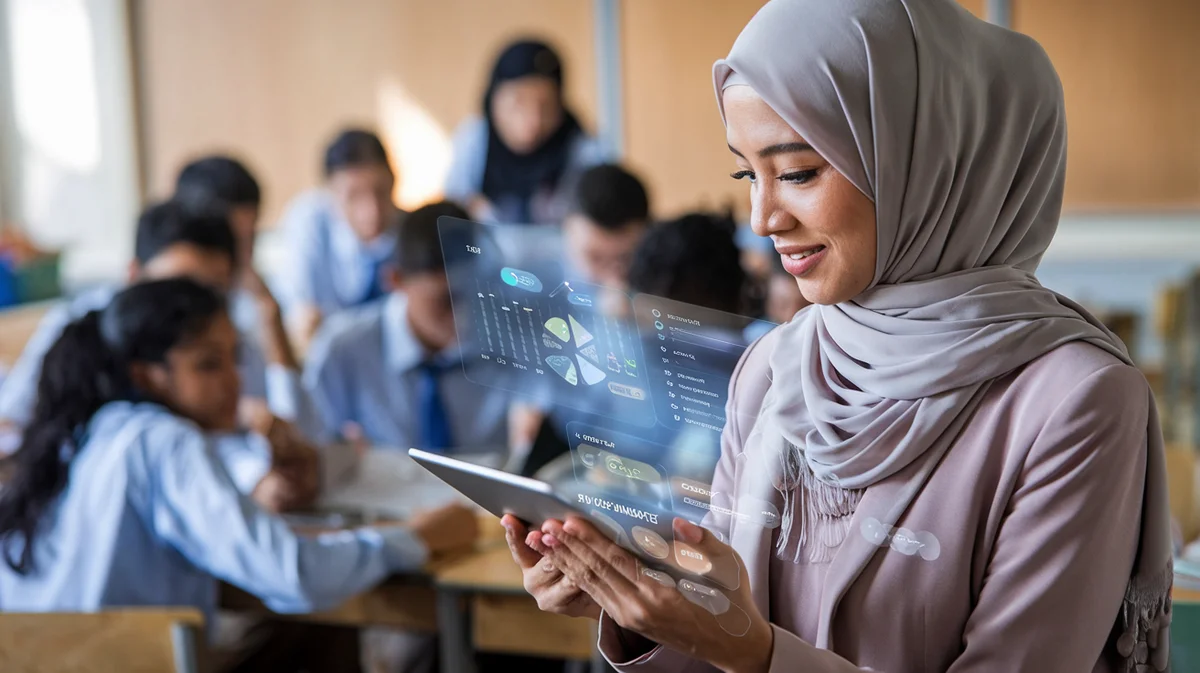Inclusive Classroom Infrastructure: Building Foundations for Inclusive Education


wp:paragraph
Creating truly inclusive classroom infrastructure is at the heart of transforming education systems for the 21st century. At UNOWA, we believe that every learner — regardless of ability, background, or circumstance — deserves access to high-quality, future-ready education. As we partner with ministries, institutions, and educators across the EU, MENA, and CIS regions, our mission is clear: to empower educational communities with innovative, adaptable, and scalable solutions that make inclusive education a reality.
/wp:paragraph
wp:heading {"level":2}
The Imperative for Inclusive Classroom Infrastructure
/wp:heading
wp:paragraph
Inclusive education is not just a policy goal — it is a fundamental human right and a driver of social and economic progress. According to UNICEF and UNESCO, inclusive education systems lead to higher overall educational attainment, improved social cohesion, and better employment outcomes for all learners. Yet, despite significant strides, challenges persist. In Central and Eastern Europe, the Caucasus, and Central Asia, for example, one in three students with special needs is still placed in special schools, and youth with disabilities are twice as likely to be out of school compared to their peers.
/wp:paragraph
wp:paragraph
Inclusive classroom infrastructure is the backbone of any successful inclusive education strategy. It encompasses not only physical accessibility but also adaptable learning environments, digital tools, support services, and a culture of belonging. As the European Agency for Special Needs and Inclusive Education notes, “Infrastructure is a key enabler of participation, achievement, and well-being for all learners.”
/wp:paragraph
wp:heading {"level":2}
Key Elements of Inclusive Classroom Infrastructure
/wp:heading
wp:heading {"level":3}
1. Physical Accessibility and Universal Design
/wp:heading
wp:paragraph
Modern inclusive classrooms are designed with universal accessibility in mind. This means barrier-free entrances, accessible toilets, adjustable furniture, and clear signage. Universal Design for Learning (UDL) principles guide the creation of spaces that accommodate diverse sensory, physical, and cognitive needs.
/wp:paragraph
wp:list
- EU guidelines require new school buildings to comply with accessibility standards, and many countries are retrofitting existing schools to meet these benchmarks.
- In the MENA region, countries like the UAE and Qatar have launched national strategies to ensure all new educational facilities are accessible to students with disabilities.
/wp:list
wp:heading {"level":3}
2. Flexible Learning Environments
/wp:heading
wp:paragraph
Adaptable classroom layouts — movable desks, modular seating, and multi-use spaces — allow educators to tailor instruction to individual and group needs. These environments support differentiated instruction, collaborative learning, and the integration of assistive technologies.
/wp:paragraph
wp:list
- According to the European Commission, schools offering flexible learning spaces report higher engagement and achievement among students with special educational needs.
/wp:list
wp:heading {"level":3}
3. Technology Integration
/wp:heading
wp:paragraph
Digital infrastructure is a game-changer for inclusive education. Interactive whiteboards, tablets, and specialized software enable personalized learning and communication for students with a range of abilities.
/wp:paragraph
wp:list
- The European Toolkit for Schools and platforms like eTwinning provide resources and professional development for teachers to harness technology in inclusive classrooms.
- In Kazakhstan and Uzbekistan, government-backed initiatives are equipping schools with adaptive technologies to bridge the digital divide for learners with disabilities.
/wp:list
wp:heading {"level":3}
4. Support Services and Professional Development
/wp:heading
wp:paragraph
Effective inclusive classroom infrastructure goes beyond bricks and mortar. It includes access to counselors, therapists, learning assistants, and ongoing teacher training.
/wp:paragraph
wp:list
- In a review of 30 education systems across the CEE/CIS region, 23 offer counseling and mentoring, 22 provide learning assistance, and 21 have specialist and therapist support in mainstream schools.
- At UNOWA, we deliver comprehensive training and analytics to ensure educators are equipped to meet the needs of every learner.
/wp:list
wp:heading {"level":3}
5. Data-Driven Decision Making
/wp:heading
wp:paragraph
Robust data collection and analysis are essential for identifying gaps, tracking progress, and informing policy. Yet, in many regions, children from marginalized communities remain invisible in national education indicators.
/wp:paragraph
wp:list
- The European Agency Statistics on Inclusive Education (EASIE) and similar initiatives are helping countries gather actionable data to drive infrastructure improvements.
/wp:list
wp:heading {"level":2}
Challenges and Proven Strategies
/wp:heading
wp:heading {"level":3}
Persistent Barriers
/wp:heading
wp:paragraph
Despite progress, several challenges remain:
/wp:paragraph
wp:list
- Legacy infrastructure: Many schools, especially in rural areas, lack basic accessibility features.
- Data gaps: An estimated 5.1 million children with disabilities in the CEE/CIS region are not accounted for in official statistics.
- Resource disparities: Implementation of inclusive practices is often limited to urban centers or pilot projects.
/wp:list
wp:heading {"level":3}
Strategies for Success
/wp:heading
wp:paragraph
Drawing on global best practices and our own experience, we recommend the following strategies:
/wp:paragraph
wp:list
- Adopt universal design principles in all new and renovated school buildings.
- Invest in digital infrastructure and ensure equitable access to devices and connectivity.
- Strengthen support services by integrating multidisciplinary teams within schools.
- Foster a culture of inclusion through ongoing professional development and community engagement.
- Leverage international frameworks such as the UN Convention on the Rights of Persons with Disabilities and EU policy guidelines.
/wp:list
wp:heading {"level":2}
Regional Insights: EU, MENA, and CIS
/wp:heading
wp:heading {"level":3}
European Union
/wp:heading
wp:paragraph
The EU monitors progress through the European Semester and the Education and Training Monitor, supporting member states with funding, policy guidance, and platforms like Erasmus+ Virtual Exchange. Countries are incentivized to innovate and share best practices, with a strong emphasis on social inclusion and digital transformation.
/wp:paragraph
wp:heading {"level":3}
MENA
/wp:heading
wp:paragraph
Gulf countries are investing heavily in state-of-the-art educational facilities, with national strategies focused on accessibility and teacher training. For example, Saudi Arabia’s Vision 2030 includes ambitious targets for inclusive education infrastructure.
/wp:paragraph
wp:heading {"level":3}
CIS
/wp:heading
wp:paragraph
While policy frameworks are evolving, implementation often lags due to funding constraints and legacy systems. NGOs play a crucial role in piloting inclusive practices, but scaling these efforts requires stronger government commitment and international support.
/wp:paragraph
wp:heading {"level":2}
UNOWA’s Approach: Empowering Inclusive Education at Scale
/wp:heading
wp:paragraph
With over 15 years of experience and more than 300 national projects delivered, we at UNOWA are uniquely positioned to support large-scale transformation. Our solutions include:
/wp:paragraph
wp:list
- MIKKO: Inclusive Education Systems — comprehensive frameworks for curriculum, infrastructure, and teacher training.
- Ulabs: STEM Innovation — cutting-edge labs and content aligned with national standards.
- Customizable analytics and content — tailored to local needs and regulatory requirements.
/wp:list
wp:paragraph
We work hand-in-hand with ministries, schools, and partners to ensure every project is sustainable, scalable, and impactful.
/wp:paragraph
wp:paragraph
Learn more about our solutions at UNOWA.
/wp:paragraph
wp:heading {"level":2}
Frequently Asked Questions
/wp:heading
wp:heading {"level":3}
What is inclusive classroom infrastructure?
/wp:heading
wp:paragraph
Inclusive classroom infrastructure refers to the physical, digital, and organizational elements that enable all students — including those with disabilities or special needs — to participate fully in learning. This includes accessible buildings, adaptive technologies, flexible learning spaces, and support services.
/wp:paragraph
wp:heading {"level":3}
Why is inclusive infrastructure important for education systems?
/wp:heading
wp:paragraph
Inclusive infrastructure ensures equal access to education, promotes social integration, and improves outcomes for all learners. It is a legal and moral obligation under international conventions and national laws.
/wp:paragraph
wp:heading {"level":3}
How can schools in resource-limited settings improve inclusivity?
/wp:heading
wp:paragraph
Start by adopting universal design principles in new projects, leveraging low-cost assistive technologies, and building partnerships with NGOs and international organizations for technical and financial support.
/wp:paragraph
wp:heading {"level":3}
What role does technology play in inclusive education?
/wp:heading
wp:paragraph
Technology enables personalized learning, communication, and assessment for students with diverse needs. It also supports teacher training and collaboration through online platforms and resources.
/wp:paragraph
wp:heading {"level":3}
Where can I find more resources on inclusive education infrastructure?
/wp:heading
wp:list
- European Agency for Special Needs and Inclusive Education
- UNESCO Inclusive Education
- European Toolkit for Schools
- UNOWA
/wp:list
wp:paragraph
Empowering educators to create a brighter future for all students is at the core of what we do. Let’s work together to transform learning experiences for the better — one inclusive classroom at a time.
/wp:paragraph








